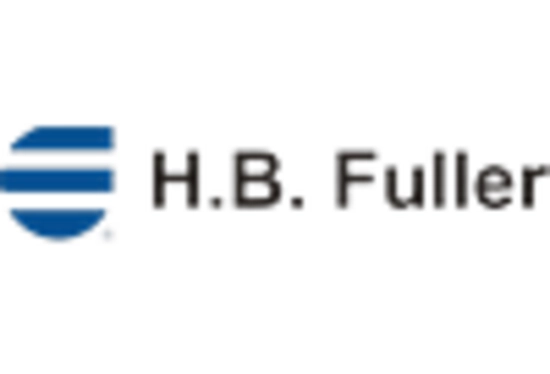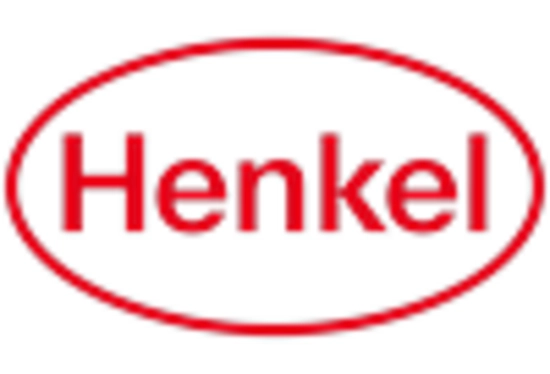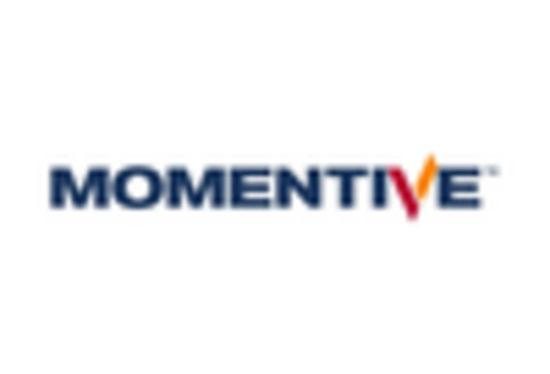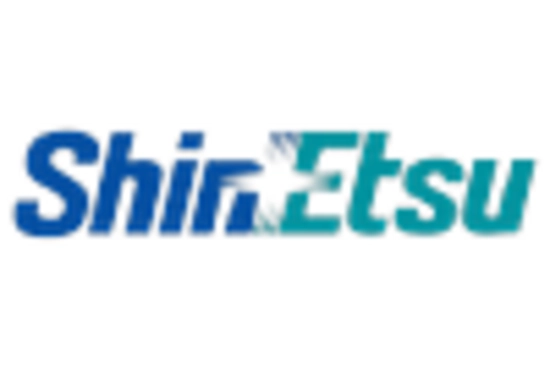Emergence of IoT Devices
The Semiconductor Seal Market is significantly impacted by the emergence of Internet of Things (IoT) devices, which are proliferating across various sectors. The IoT market is projected to reach a valuation of over 1.5 trillion USD by 2025, creating substantial opportunities for semiconductor manufacturers. As IoT devices often operate in diverse environments, the need for effective sealing solutions to protect sensitive components from moisture, dust, and temperature fluctuations is critical. This trend is likely to drive innovation within the Semiconductor Seal Market, as manufacturers develop specialized seals that cater to the unique requirements of IoT applications. The integration of smart technologies into everyday objects further emphasizes the importance of reliable semiconductor seals in ensuring device functionality and durability.
Expansion of Automotive Electronics
The Semiconductor Seal Market is significantly influenced by the expansion of automotive electronics, which is becoming increasingly prevalent in modern vehicles. With the automotive sector projected to grow at a compound annual growth rate of 7% through 2025, the demand for semiconductor components is expected to rise correspondingly. This growth is largely attributed to the integration of advanced driver-assistance systems (ADAS) and electric vehicle technologies, which require high-performance semiconductors. Consequently, the need for effective sealing solutions to protect these components from moisture, dust, and other contaminants is paramount. The Semiconductor Seal Market stands to benefit from this trend, as manufacturers seek innovative sealing technologies that can withstand the rigorous conditions present in automotive applications.
Increased Focus on Energy Efficiency
The Semiconductor Seal Market is witnessing a shift towards energy efficiency, driven by both regulatory pressures and consumer preferences. As industries strive to reduce their carbon footprint, the demand for energy-efficient semiconductor devices is on the rise. This trend is reflected in the semiconductor market, which is expected to grow at a rate of 5% annually through 2025. Effective sealing solutions are essential in enhancing the energy efficiency of semiconductor devices by minimizing energy loss and improving thermal management. Consequently, the Semiconductor Seal Market is likely to benefit from innovations aimed at developing seals that not only protect components but also contribute to overall energy savings. This focus on sustainability aligns with broader industry goals, making it a pivotal driver for the Semiconductor Seal Market.
Rising Demand for Consumer Electronics
The Semiconductor Seal Market is experiencing a notable surge in demand, primarily driven by the increasing consumption of consumer electronics. As more households adopt smart devices, the need for reliable semiconductor components intensifies. In 2025, the consumer electronics sector is projected to reach a valuation of approximately 1 trillion USD, which directly correlates with the growth of the semiconductor seal market. This demand necessitates robust sealing solutions to ensure the longevity and performance of semiconductor devices, thereby propelling the Semiconductor Seal Market forward. Furthermore, the trend towards miniaturization in electronics amplifies the need for advanced sealing technologies that can protect sensitive components from environmental factors, thus enhancing the overall reliability of electronic products.
Growth in Telecommunications Infrastructure
The Semiconductor Seal Market is poised for growth due to the ongoing expansion of telecommunications infrastructure. As the demand for high-speed internet and 5G technology escalates, the need for reliable semiconductor components becomes critical. The telecommunications sector is expected to invest over 300 billion USD in infrastructure development by 2025, which will likely drive the demand for semiconductor seals. These seals play a crucial role in protecting sensitive electronic components from environmental factors, ensuring optimal performance and longevity. As telecommunications companies strive to enhance network reliability and efficiency, the Semiconductor Seal Market is likely to see increased adoption of advanced sealing solutions that meet the stringent requirements of modern telecommunications equipment.















Leave a Comment